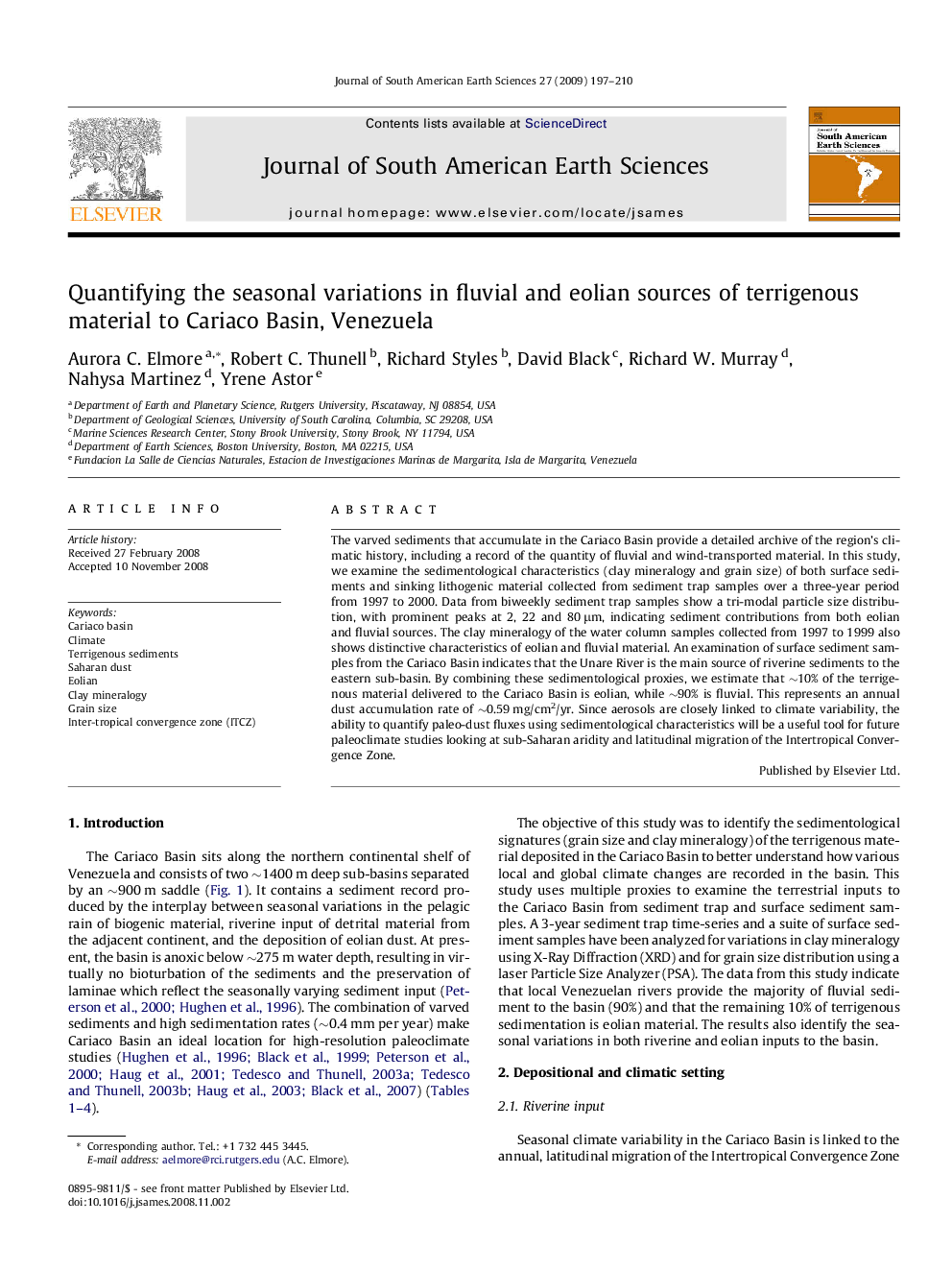| Article ID | Journal | Published Year | Pages | File Type |
|---|---|---|---|---|
| 4682923 | Journal of South American Earth Sciences | 2009 | 14 Pages |
The varved sediments that accumulate in the Cariaco Basin provide a detailed archive of the region’s climatic history, including a record of the quantity of fluvial and wind-transported material. In this study, we examine the sedimentological characteristics (clay mineralogy and grain size) of both surface sediments and sinking lithogenic material collected from sediment trap samples over a three-year period from 1997 to 2000. Data from biweekly sediment trap samples show a tri-modal particle size distribution, with prominent peaks at 2, 22 and 80 μm, indicating sediment contributions from both eolian and fluvial sources. The clay mineralogy of the water column samples collected from 1997 to 1999 also shows distinctive characteristics of eolian and fluvial material. An examination of surface sediment samples from the Cariaco Basin indicates that the Unare River is the main source of riverine sediments to the eastern sub-basin. By combining these sedimentological proxies, we estimate that ∼10% of the terrigenous material delivered to the Cariaco Basin is eolian, while ∼90% is fluvial. This represents an annual dust accumulation rate of ∼0.59 mg/cm2/yr. Since aerosols are closely linked to climate variability, the ability to quantify paleo-dust fluxes using sedimentological characteristics will be a useful tool for future paleoclimate studies looking at sub-Saharan aridity and latitudinal migration of the Intertropical Convergence Zone.
